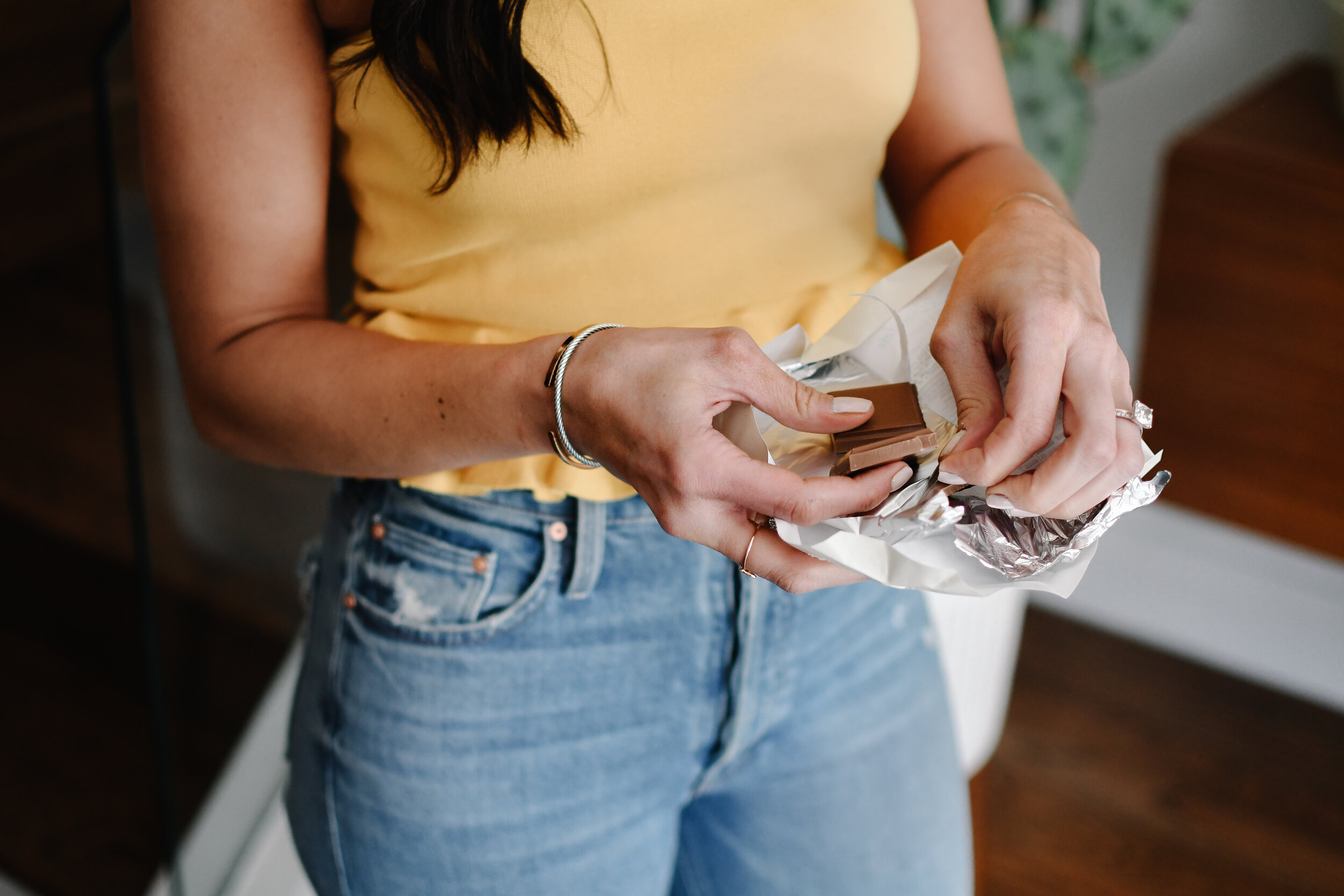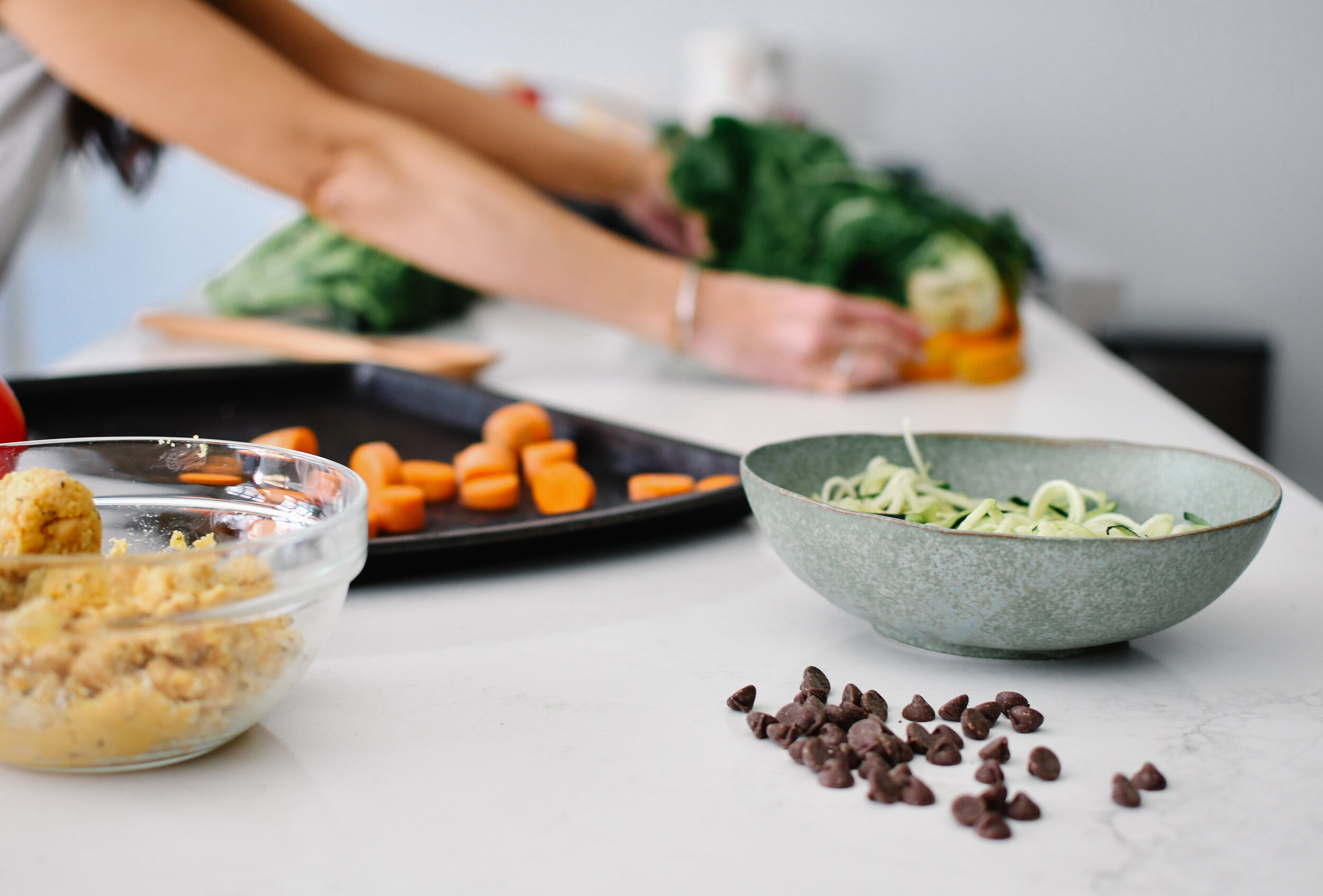If I Allow All Foods Into my Diet, What if I Can’t Stop Eating Junk Food?
By: Sammi Haber Brondo | NYC Dietitian
I hear this question all the time. And it’s valid. There’s a big fear that if you allow yourself to eat all foods, you’ll never eat nutritious foods again. But, that’s a big misconception. And that’s usually not the case at all.
First, let me clarify the phrase “junk food.” Honestly, no food should be called junk food. Unless the food is coming from the garbage or is spoiled… then it’s probably junk. I used that phrase in the headline to categorize any food that’s usually considered off limits. I didn’t want to choose one specific food and demonize that food. So, please know that “junk food” in that headline stands for any food that you may have placed off limits. But really, no food is junk!
Now that we’ve gotten that out of the way, I recently received a message on Instagram from someone who asked me about my all foods fit mindset and if it really was the right fit for her. She said she loves the idea, but it caused her to eat pastries every single day, even when she didn’t necessarily want them. And now she feels like crap.*
To me, this sounded like someone who’s in the middle of figuring out a healthy relationship with food. She’s learning that all foods can fit and is excited about including them! But of course, if you eat something just because you can – even when you’re not hungry for it or don’t necessarily want it – you may end up not feeling that great.
It brought up and reminded me of a great point though: that an all foods fit mindset isn’t black and white. And once you start working towards food freedom, it can feel scary to incorporate more foods. It reminded of that common fear – or even occurrence – of eating all the food when you first truly start to allow different foods into your diet.
Food freedom takes a lot of work to understand your hunger and fullness cues, as well as your cravings and how to honor them. Let me be frank: it is NOT easy! Diet culture basically tells you everything in order to do just the opposite of that: “If you’re full you’re probably bloated!” “If you’re hungry, drink water!” “Here’s how to curb a craving without eating the food you’re actually craving!” and the list goes on.
So what if I told you that once you get past this stage of eating said food – let’s keep using pastries – every single day, you’ll eventually eat them when you want them and find food freedom? At first, you might eat some foods more often that you’d expect. But I promise, when you stick with it, that balance will be found. Here’s how it usually works:
*shared anonymously with permission
Step 1: Allow all foods
The first step to food freedom to is truly allow all foods. No more classifying food as good or bad, as junk food or as unhealthy. Sure, some foods are more nutritious than others, but there’s truly a time and place for everything. All foods can fit.**
If you’re craving a cookie, but eat an apple, the apple probably won’t satisfy you. The cookie was the right choice at that time. And alternatively, if you’re craving an apple but have a cookie, the cookie probably won’t satisfy you either. Again, there’s a time and place for everything.
To start, allow all foods. Give yourself unconditional permission to eat any food, any time. Once you know that you can eat any food you want when you want it, food starts to lose SO much power. You’re able to look at a shelf of food and ask “what do I really want right now?,” while knowing that you’re able to eat any of it.
**Of course, unless you have a medical reason to avoid certain foods. I don’t want to downplay that this is a real and legitimate reason to avoid a food. And if that’s the case for you with any food, then that food does not fit!
Step 2: Honor cravings until they’re satisfied
Once you start allowing all foods, you may find that you want some foods more often than others. It may take certain cravings a long time to feel satisfied.
For example, if we look at the pastry message again, maybe pastries were a food that my friend considered off limits for a while. With that in mind, it makes sense that when a food is off limits for a while, it takes lot of that food to feel satisfied. And also, when it comes to food that you haven’t let yourself eat or enjoy for a while, the excitement of being able to eat this food may take a little longer to level out.
This common and normal. And trust me, the excitement will level out eventually.
In one of my favorite food behavior books, Breaking Free from Emotional Eating by Geneen Roth, the author talks about what happened when she finally gave herself permission to eat all foods. For 2 weeks straight, all she craved – and thus, all she ate – were cookies. She started to get a little concerned. Was she only going to want to eat cookies forever?!
But, after 2 weeks, something changed. That cookie craving was finally satisfied, and she found herself wanting nothing but a fresh salad.
Like in this example, if you haven’t allowed a certain food for a long time, it’s likely that it might take time for that craving to feel satisfied. And for your body to trust that you’re going to keep allowing and eating this food, and this isn’t just a last supper mentality ordeal (read more about that here).
Step 3: Include a variety of foods that help you feel your best
Lastly, once the above happens, you really will find yourself craving a variety of foods. Our bodies are smart. Just like they know when they need a little more to be satisfied after certain foods have been restricted, they also know that they need a variety of food groups and nutrients to survive: vitamins, minerals, protein, fat and carbs.
Physically, your body wants to feel its best. You function most optimally when you feel your best! And of course, you feel your best physically when you’re nourishing your body with nutrient dense foods.
Mentally, you feel your best when you’re in a place of food freedom and no longer restricting foods. This is when no food feels off limits, overly tempting, or guilt causing.
In order to create that perfect situation where you feel both physically and mentally your best, once you allow all foods and truly satisfy cravings, you’ll naturally eat in a way that leads you towards this. This means plenty of vegetables, fruit, protein and whole grains. And also pastries, cookies, pasta and pizza when those cravings strike too.
Like the example above, eventually once your body trusts that all foods are allowed and can be eaten any time, you’ll start to eat and crave a variety of different nutrients that nourish you both physically and mentally.
I promise you: eating this way IS possible. But it doesn’t happen overnight. Steps 1 and 2 have to happen first.
Only once you truly allow all foods and let your cravings be satisfied, can you move on to step 3, where you have a healthy relationship with a variety of different food.
It isn’t always a quick or linear journey – but that doesn’t mean it’s impossible. Stick with it! Usually the things that take the most time are the ones that are most worth it. If step 2 seems like it’s lasting forever, it may be because you restricted your diet for a while and need a little longer to satisfy certain cravings. Eventually, you will get there.
And once you do, I can guarantee, nothing feels better. Because knowing you can eat the foods you want – and do things like go to brunch with friends and order what you want, or enjoy a traditional holiday dinner – and still eat to feel your best physically is honestly one of the most freeing things you can do for yourself.
Want more tips on creating an easy, sustainable healthy relationship with food? Check out my membership program, All Foods Fit, with 12 thorough lessons to teach easy ways to create a healthy relationship with food. Or, check out my e-book, 7 Days to Make All Foods Fit, to learn a step by step guide to create a healthier relationship with food in just 7 days.













